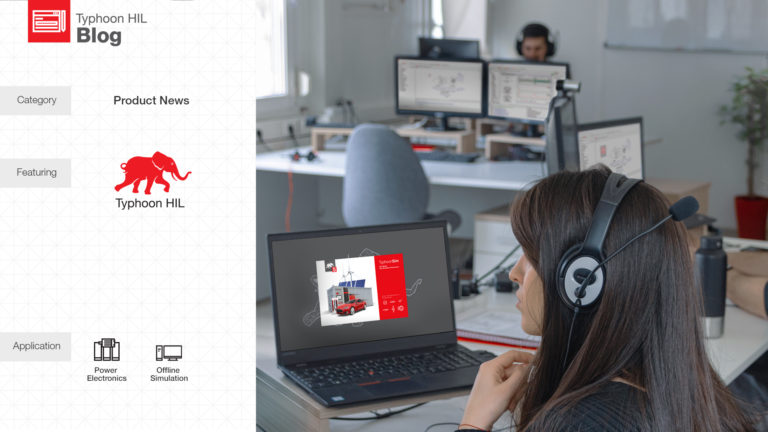
From Offline to Hardware-in-the-Loop Simulation Seamlessly: Introducing TyphoonSim
December 18, 2024
TyphoonSim’s integration into the Typhoon HIL Control Center creates a unified toolchain for offline and real-time simulation. Power electronics and power systems engineers can now seamlessly transition from the design phase to HIL testing and back, streamlining workflows, enhancing precision, and accelerating project and research timelines.
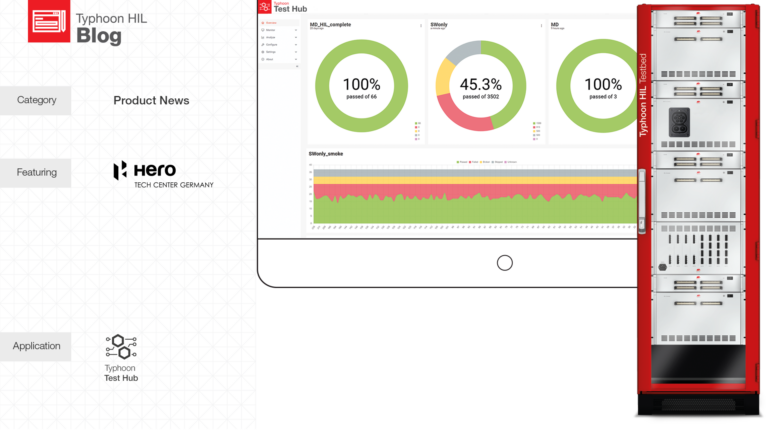
Typhoon Test Hub: Integrated Automation for Streamlined HIL Testing
November 13, 2024
Typhoon Test Hub is transforming HIL testing by minimizing the initial effort needed to gain the advantages of test automation. HERO Tech Center Germany leveraged it for scalable test automation, enhancing coverage and identifying specification gaps early. This approach improved efficiency, test completeness, and reporting. Read the full blog to discover how Typhoon Test Hub can elevate your testing process…
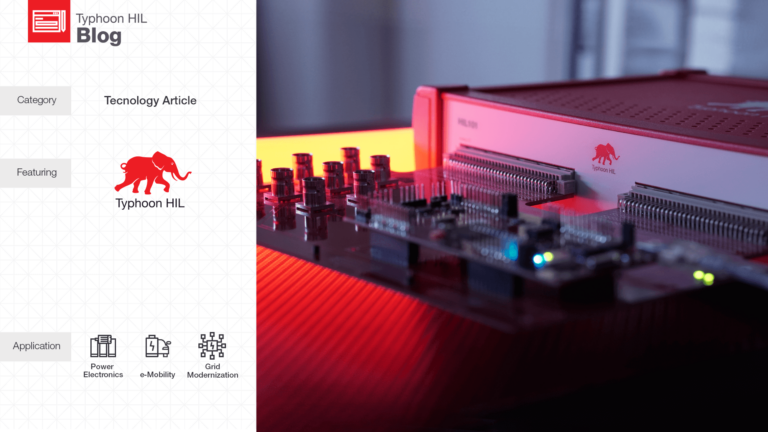
What is Controller Hardware-In-The-Loop Simulation, or C-HIL?
September 19, 2024
Controller Hardware-in-the-Loop (C-HIL) simulation is a powerful methodology for testing power electronics control systems. It creates a dynamic testing environment where the real controller (device under test) interacts with a high-fidelity, real-time simulation of the plant, allowing engineers to test scenarios that would be too expensive or dangerous to recreate in a physical lab. By reducing costs, impr…
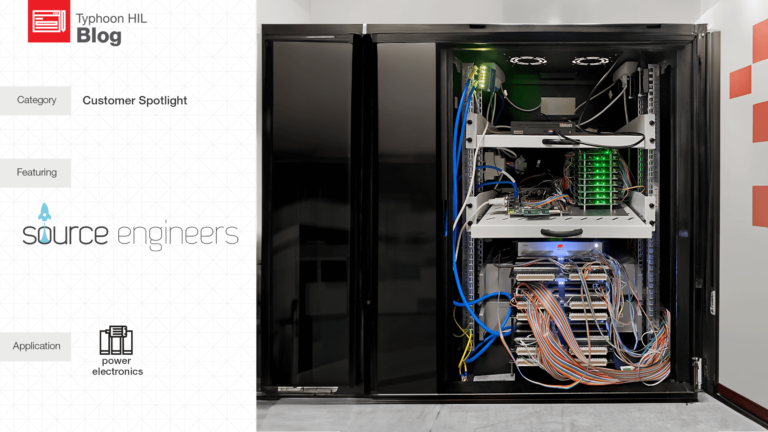
Software Test Setup for a Mass Spectrometer for NASA’s Commercial Lunar Payload Services Program
August 28, 2024
Discover how Source Engineers, in collaboration with the European Space Agency and the University of Bern, is developing firmware for the “Laser Ablation Ionization Mass Spectrometer” using Typhoon HIL’s HIL404 real-time simulation device. Learn about the rapid prototyping strategy that accelerates development and ensures high-quality firmware for this payload part of the Commercial Lunar Payload Servic…
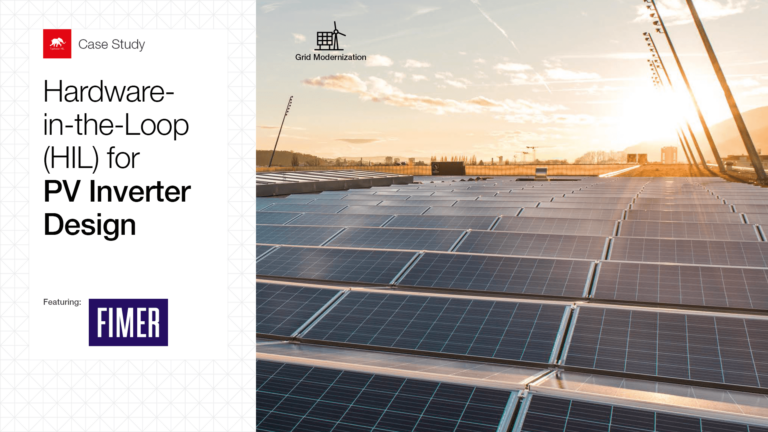
Hardware-in-the-Loop (HIL) for PV Inverter Design
April 3, 2024
Have you ever wondered how engineers test and perfect the control systems behind photovoltaic inverters? This blog article, written by the Chief Technology Officer at Fimer S.p.A. dives into the world of Hardware-in-the-Loop (HIL) systems, a powerful tool that creates a safe and controlled environment to simulate real-world scenarios for inverter control boards. HIL systems not only accelerate development c…
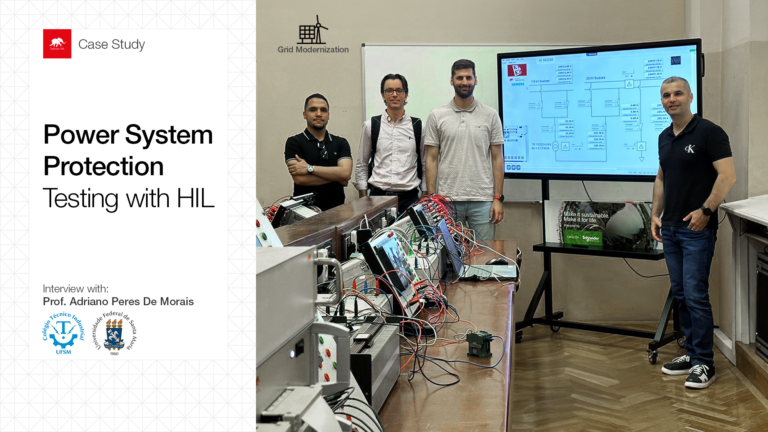
Power System Protection Testing with HIL
January 10, 2024
This blog article delves into the world of power system protection testing using Hardware-in-the-Loop (HIL) simulation, as presented by Prof. Adriano Peres de Morais from the Federal University of Santa Maria (UFSM) in Brazil. Prof. Adriano, a leading researcher in power system protection and an advocate for HIL technology, shares his insights and experiences using Typhoon HIL in his research and teaching a…
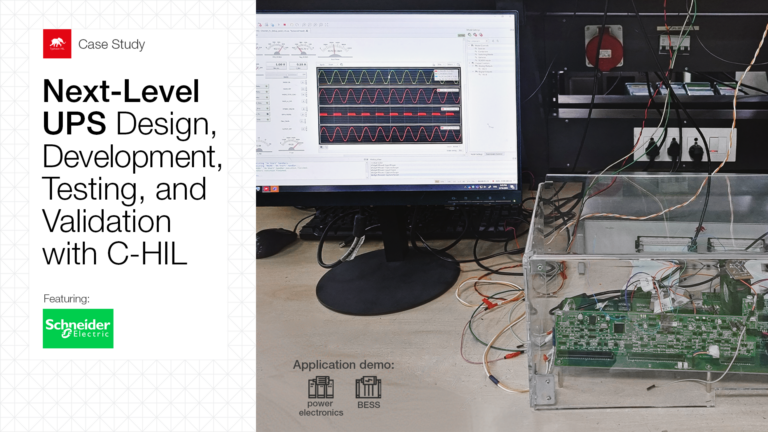
Next-Level UPS Design, Development, Testing, and Validation with C-HIL
October 18, 2023
This blog article is covering the story from the Schneider Electric Smart UPS Online C-HIL Core Team, where they outline the primary obstacles usually encountered in UPS design, development, and testing, as well as what a C-HIL setup brings when it comes to UPS testing. They shared what HIL benefits did the Schneider Electric Single-Phase UPS Team experienced first-hand and how the real time C-HIL solutions…
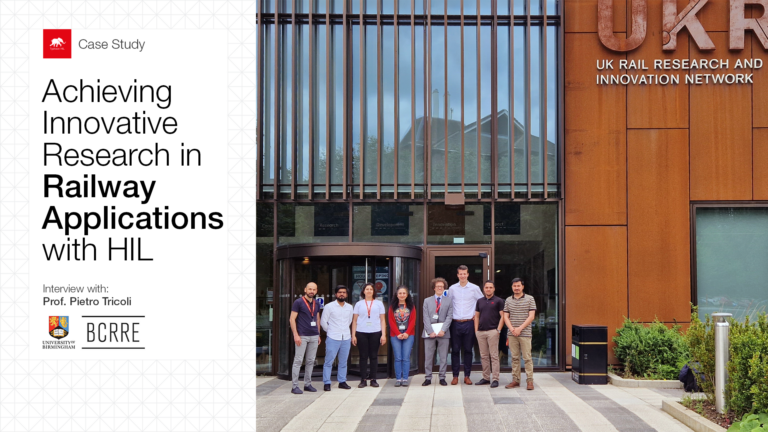
Achieving Innovative Research in Railway Applications with HIL
October 11, 2023
In this blog article, learn more about the pioneering work in power electronics of Prof. Pietro Tricoli’s Power Electronics Group at the Birmingham Centre for Railway Research and Education (BCRRE) at University of Birmingham, which is part of the UK Rail Research and Innovation Network (UKRRIN).
See how their group leans onto industry-academia collaboration to produce innovative research results, transfer…
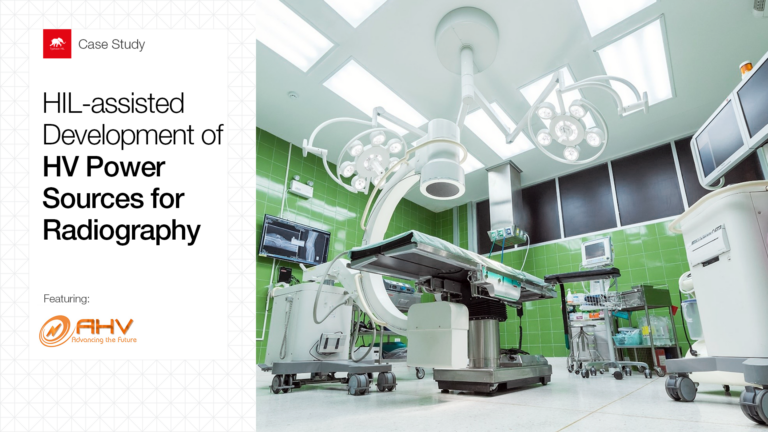
HIL-assisted Development of HV Power Sources for Radiography
May 31, 2023
The latest developments in the X-ray medical imaging help improve diagnostic capabilities while reducing costs. X-ray generators need to keep up with the challenges imposed by new semiconductor and software technologies. Time and complexity of a “full-digital” X-ray generator development are significantly reduced by using HIL instead of a complex setup of X-ray tubes, high voltage sources, power loads a…

Introducing HIL testing leads to faster research results at TMU Japan
March 15, 2023
The Tokyo Metropolitan University Power Electronics Laboratory conducts research on improving the performance of passive devices for power electronics and power conversion circuits. Isamu Sugiyama from MyWay had the honor to interview Prof. Dr. Keiji Wada and his PhD student, Takaya Sekiguchi, on how they use Typhoon HIL in their research. Read this blog article to learn more on how introducing HIL into the…
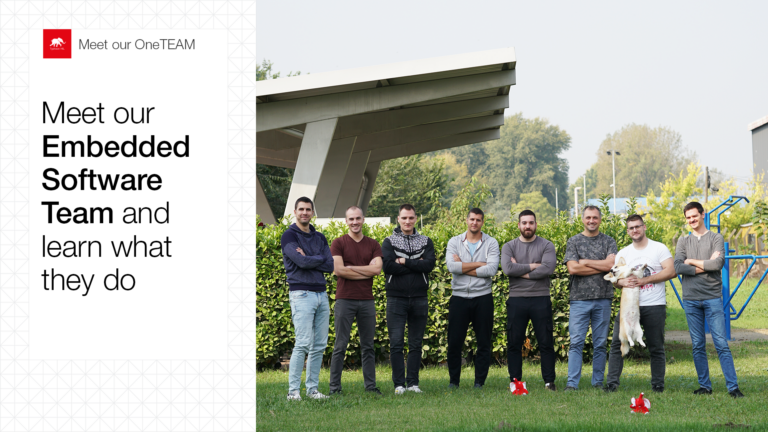
Meet our Embedded Software Team and Learn What They Do
October 12, 2022
At Typhoon HIL, we work on bringing together a great selection of people to enrich our OneTEAM and share and promote our core values. We wanted to give you a chance to meet the people behind our solutions and share insight into what their daily work looks like. In this blog, we start with our Embedded software team, which is the engineering team at the heart of our real-time solutions, ensuring they run fas…
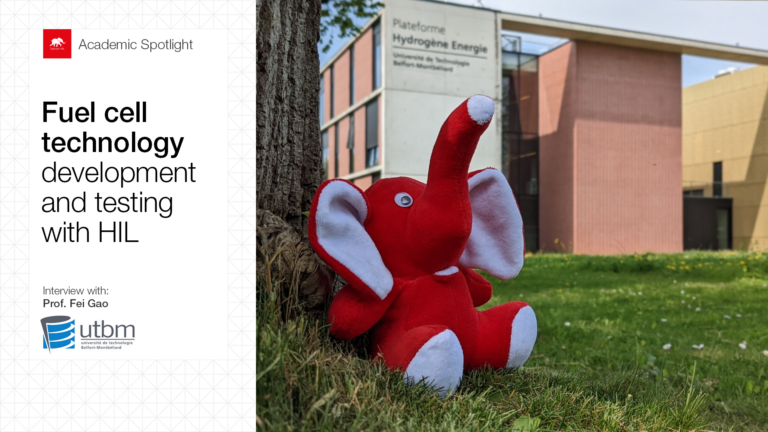
Fuel Cell Technology Development and Testing with HIL
October 5, 2022
During our team’s visit to The University of Technology of Belfort-Montbéliard in France, we had a chance to interview Prof. Fei Gao, a pioneer in adopting Typhoon HIL for academic research and teaching. In this video and blog, learn more about the role HIL plays in his work within the fuel cell application field.
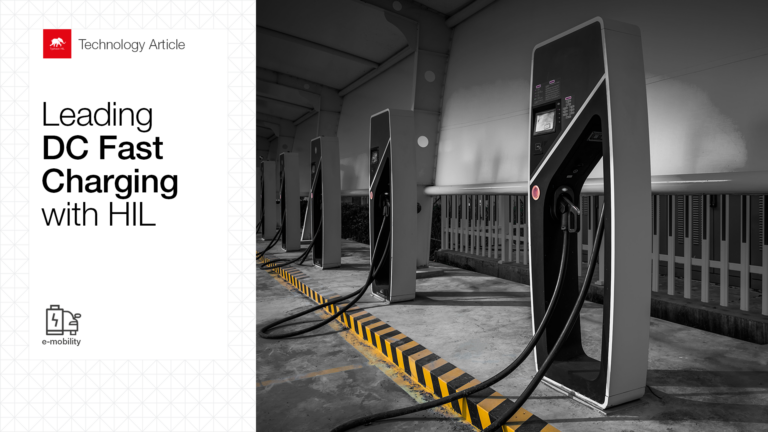
Leading DC Fast Charging with HIL
September 27, 2022
The main roadblock that currently holds back electric vehicles (EVs) from becoming the mainstream transportation method is their increased charging time in long-distance driving. But this is where DC Fast Chargers (DCFC) come in. DCFC can revolutionize the e-Mobility industry by providing a faster and more efficient charging experience, also enabling the fast charging of electrified fleets and heavy-duty ve…
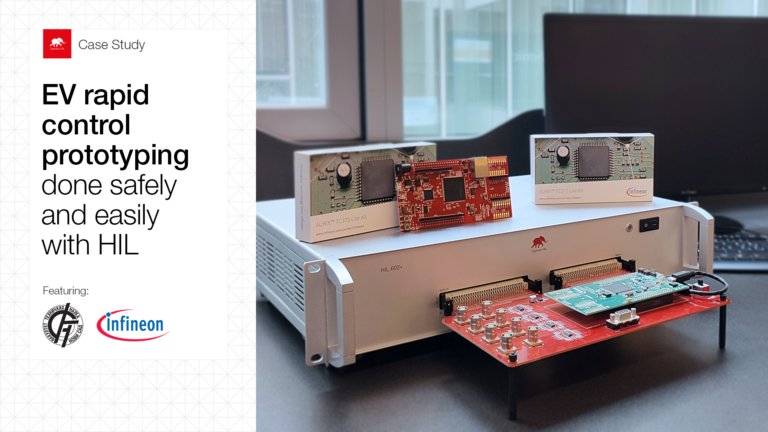
EV Rapid Control Prototyping Done Safely and Easily with HIL
September 22, 2022
In this blog, learn more about the controller test setup put together for teaching purposes at The Faculty of Technical Sciences of the University of Novi Sad, Serbia, which is integrating solutions from Infineon Technologies and Typhoon HIL.
This text is adapted and re-published from a blog written by Emma Azek for Infineon under the title Great development environment for xEV applications with AURIX™ T…
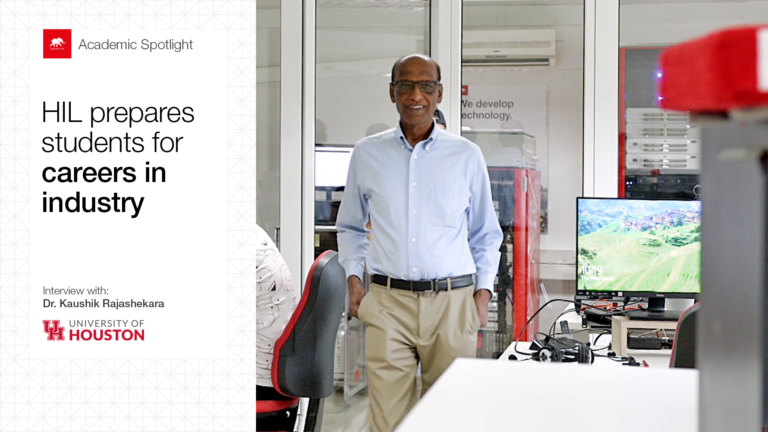
HIL Prepares Students for Careers in Industry
September 14, 2022
We had the honor to host our long-time academic collaborator and friend, Prof. Kaushik Rajashekara from the University of Houston, in our main R&D Center in Serbia. We used this chance to record an interesting interview with him, so we can share with you more about his career path in research, current main research topics, and how he uses HIL in his teaching to help students gain valuable skills for careers…
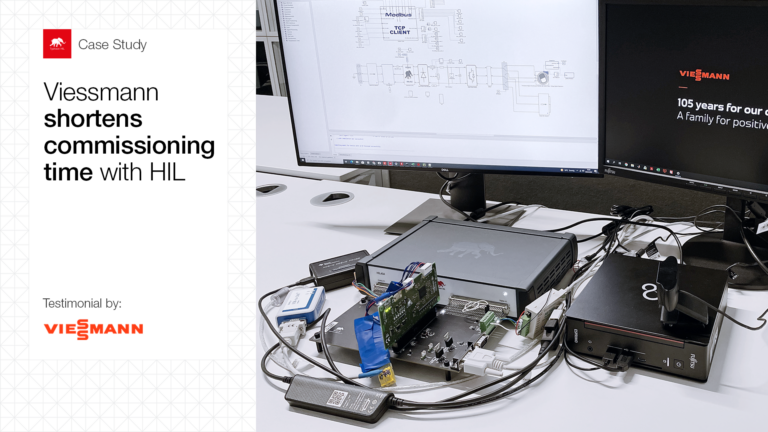
Viessmann Shortens Commissioning Time with HIL
March 23, 2022
Power electronics control testing that is quick, efficient, and thorough can be a challenge to achieve. To allow for hands-on evaluation of a real-time control testing setup that fulfills this spec, Typhoon HIL provides HIL in a Day exercises for interested parties. After this exercise was done with Viessmann, they observed faster testing and commissioning, with less time and money spent. Read more about th…
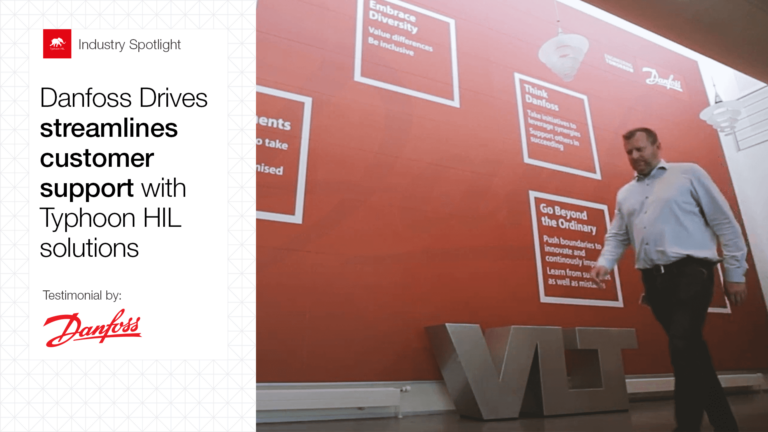
Danfoss Drives Streamlines Customer Support with Typhoon HIL Solutions
February 25, 2022
Danfoss Drives leverages Hardware-in-the-Loop (HIL) technology to provide faster customer support and ensure high-quality drive performance. Engineers appreciate the ease of use of HIL systems, which they value most for their efficiency. HIL enables engineers to effortlessly develop machine-agnostic drive control software, streamlining the development process. Learn more about the way Danfoss Drives reaps …
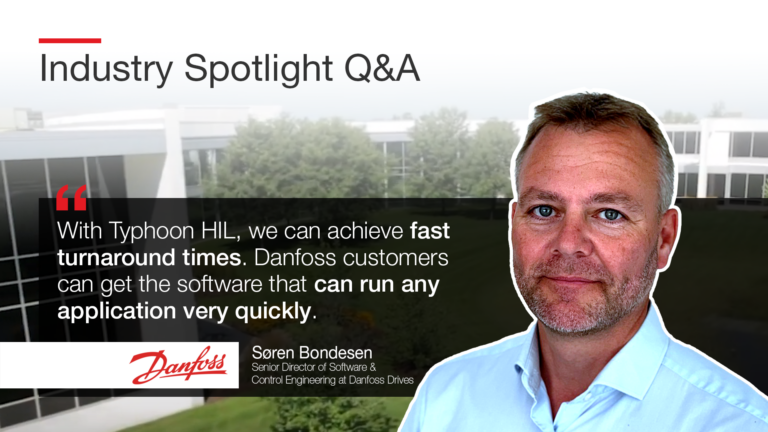
HIL Drives Frontline Customer Support at Danfoss Drives
September 22, 2021
Danfoss Drives achieved significant improvements in speed, cost savings, and quality by using Hardware-in-the-Loop (HIL) testing. With HIL simulation, tasks that typically required weeks in the lab were completed in just a few days, allowing for efficient software adjustments that met customer expectations. This approach not only enhanced operational efficiency but also provided a superior customer experien…
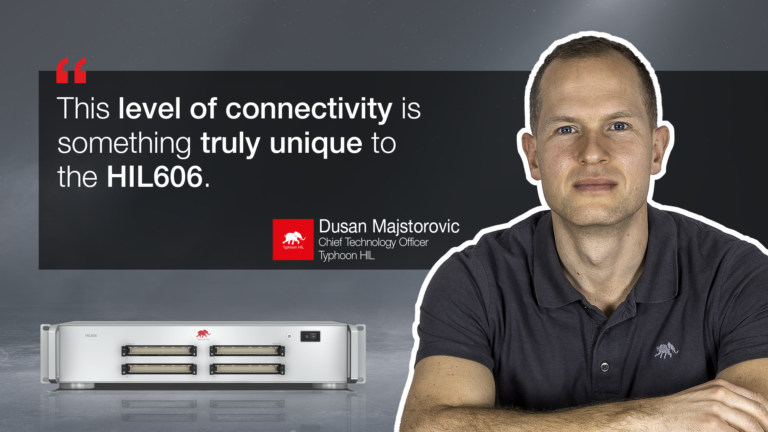
Meet the New HIL606 with Typhoon HIL CTO Dusan Majstorovic
June 29, 2021
Dusan Majstorovic is the Chief Technology Officer at Typhoon HIL, and it is his role to oversee all technology and product development activities. He was involved in the development of Typhoon HIL’s solutions from the very beginning, mainly in the area of real-time devices and the programmable FPGA software approach that was pioneered in the early days of the company. In this blog, he will introduce to us…
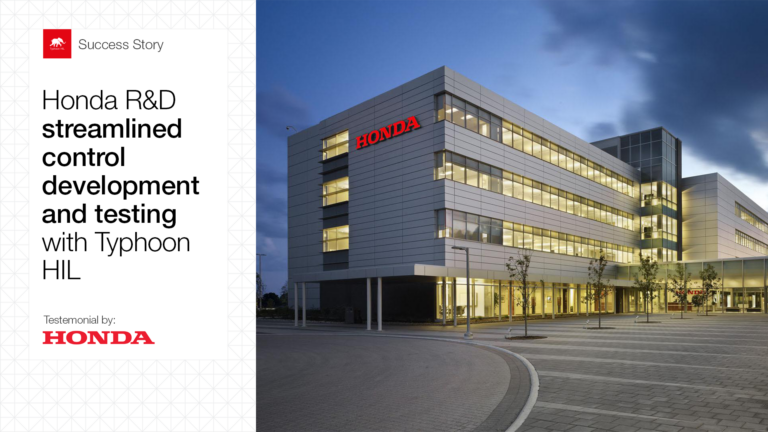
Honda R&D Streamlined Control Development and Testing with Typhoon HIL
August 7, 2020
HIL technology streamlined Honda R&D’s control development and testing, addressing the increasing complexity of embedded systems that demand more development effort and time. Its intuitive, easy-to-use interface allows first-time users to begin simulating immediately, while fast model compilation with HIL significantly reduces verification time. Read the blog to learn more about how HIL is transforming the …
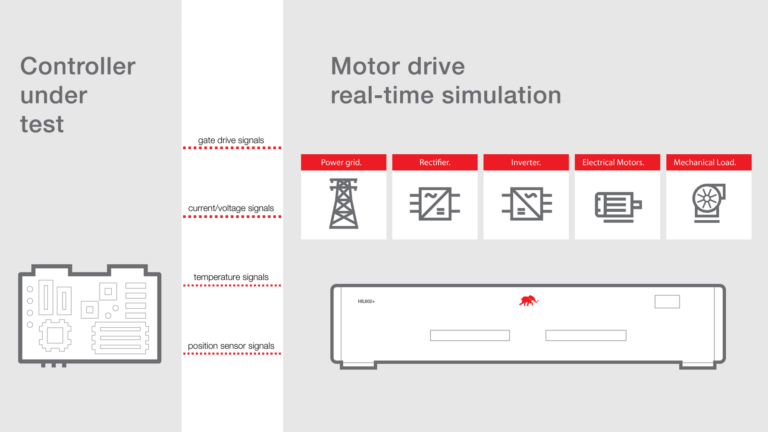
6 Reasons for Rapid Adoption of HIL Testing for Variable Frequency Drives
May 14, 2020
Software is becoming a key value generator for Variable Frequency Drives (VFDs), driven by new motor designs, semiconductor switches, and powerful processors. As system-level interoperability requirements expand and modular power converter designs become standard, grid code compliance is increasingly essential. With the complexity of software lifecycle maintenance exploding, it’s crucial to understand how…
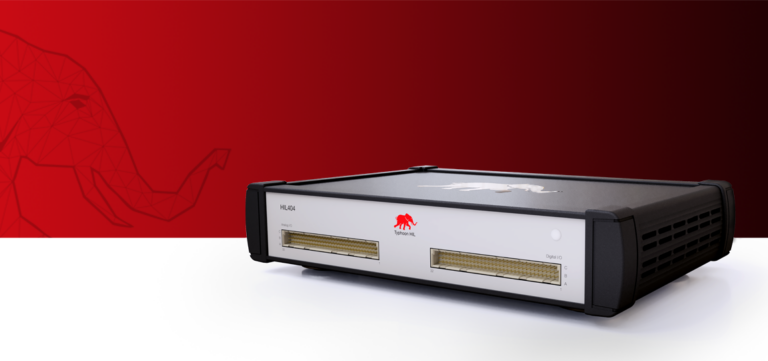
4th Generation HIL: Built For the Most Advanced Motor Drive Applications
April 2, 2020
The HIL 404 real-time simulator by Typhoon HIL redefines ultra-high fidelity with a 200ns simulation time step and 3.5ns digital input sampling. It boasts the most accurate 100kHz Dual-active bridge (DAB) model and supports JMAG-RT FEM machine model import. With expanded connectivity options including USB 3.0, Ethernet, GB/s serial link, JTAG, and General Purpose IO (GPIO), the HIL 404 sets a new standard …
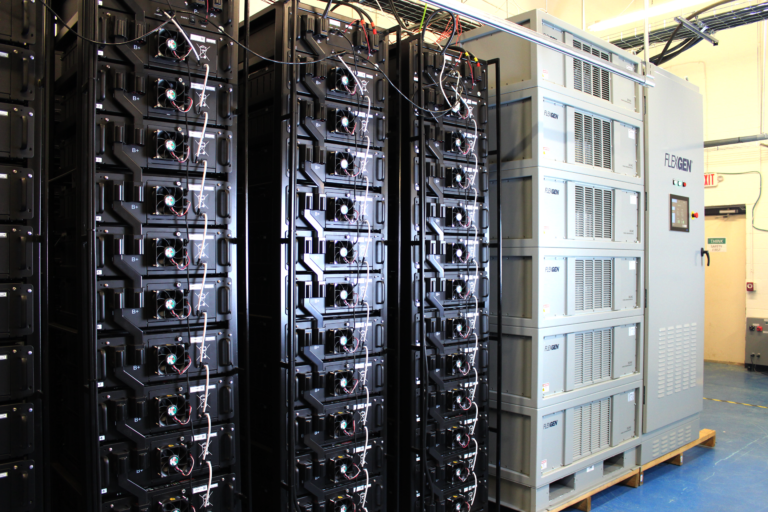
FlexGen Industry Spotlight with Tony Olivo and Preston Miller
May 17, 2018
FlexGen, a leader in the energy storage industry, has revolutionized the field with its advanced hybrid energy storage software and power conversion products for various power systems. Commissioned by Vista Energy, FlexGen’s 10-megawatt/42-megawatt-hour storage system is now the largest battery in Texas. Tony Olivo, Director of Engineering, and Preston Miller, firmware engineer, discuss how they utilized Ty…
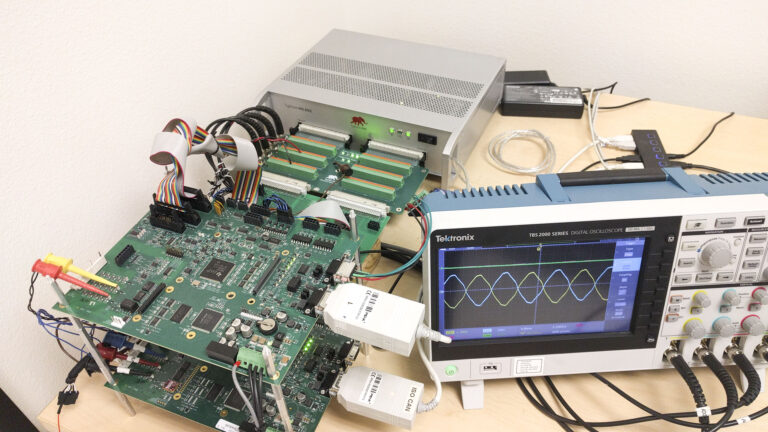
EPC Power Industry Spotlight with Ryan Smith
April 19, 2018
Using a Controller Hardware-in-the-Loop simulation platform, EPC Power was able to integrate their control software with new hardware in just two days. Based in San Diego, CA, EPC Power designs and manufactures grid-forming bi-directional inverters and DC-DC converters for solar, wind, energy storage, automotive, and microgrid applications. Ryan Smith, Chief Technology Officer and Chief Controls Architect, …

5 Ways the Virtual HIL Device Will Make You a Better HIL Engineer
September 14, 2016
In computing, a virtual machine (VM) emulates a computer system, while an emulator allows one system to run software from another. Similarly, the Virtual HIL Device is a software toolbox within the HIL toolchain that enables HIL models to run on a PC instead of a HIL device. This true HIL emulator runs the same code as the proprietary HIL processor and retains all advanced features like scope, capture, Pyth…

Seven HIL402 Myths
May 31, 2016
Merriam Webster’s Dictionary defines myth simply as “an idea or story that is believed by many people but that is not true”. Myths are not only the stuff of fairytales and bedtime stories. They also appear in engineering, even in power electronics. Let us now take a closer look at seven HIL402 myths and see how they stack up against reality.

Power Electronics Control Design and Testing in the 21st Century
May 10, 2016
C-HIL testing evaluates the performance of physical control system hardware, firmware, and software against a real-time simulated mathematical model. This method, long utilized in automotive and aerospace industries, is now transforming power electronics testing by enabling engineers to test complex scenarios that are impractical or too expensive to replicate in the lab. Join us as we delve deeper into the …

Six Things to Consider when Selecting a Hardware-in-the-Loop System for your HIL Laboratory
April 18, 2016
Until recently, the market lacked Hardware in the Loop (HIL) systems specifically designed for power electronics and microgrid applications, leaving only large companies in rail and aerospace capable of adding HIL functionality to general-purpose systems. However, advances in system-on-chip devices have now opened the market to numerous new vendors. This surge in competition, while promising, also leads to …

4 Principles of Good Hardware-in-the-Loop Design
April 18, 2016
Despite occasional frustrations shared by engineers about Hardware-in-the-Loop (HIL) simulation, HIL testing has great potential when designed correctly. Inspired by Dieter Rams’ principles of good design, we outline four key principles for Good HIL Design: ease of use, plug-and-play capability, ultra-high fidelity, and overall usefulness. These principles can transform HIL systems into indispensable tools …